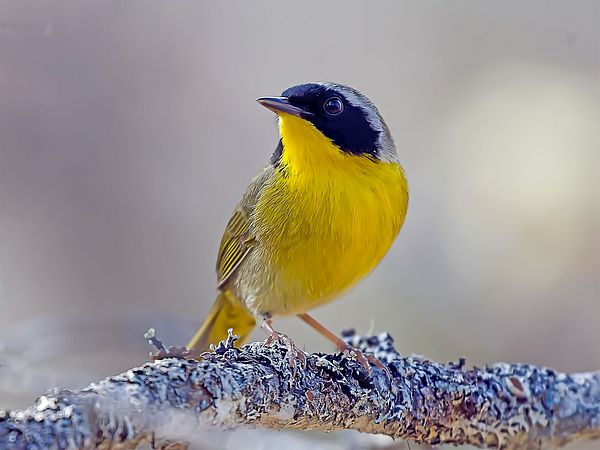Common Yellowthroat – The Bandit Warbler
Article by Ava Steenstrup
The Common Yellowthroat is one of North America’s most widespread and abundant warbler species. Because of the male’s striking plumage, especially the vibrant yellow throat and bold black mask with a white border at the top, as well as and its easily memorized “witchity-witchity-witchity” song, it is one of the most recognizable New World warblers. The male Common Yellowthroat is sometimes nicknamed the “yellow bandit” due to its distinctive broad black mask.
The male also has olive upperparts and lower belly area. The bold, colorful appearance of the male contrasts with the plainer female. Females are olive brown above, have paler underparts, and lack the black mask.
These wetland warblers can be found in freshwater and saltwater marshes, swamps, along streams, and in thickets along the edges of wet meadows and bogs. Although they are most common in wet areas, they are also found in dry upland forests, brushy overgrown fields, roadside ditches, and orchards. This species is likely to be spotted in any area of ground vegetation that provides dense cover.
Common Yellowthroats forage for food by skulking slowly through brush vegetation, methodically gleaning an assortment of adult or larval insects such as moths, mosquitoes, caterpillars, grubs, beetles, small dragonflies, small grasshoppers, mayflies, damselflies, ants, spiders, and butterflies from leaves or branches or, occasionally, by hopping from the ground or flying low between vegetation to catch them in midair. They will also eat seeds.
Common Yellowthroats begin nesting by the end of spring or early summer. A bulky nest of dead leaves and grasses is usually built by the female on or near the ground in grass, reeds, weeds, or low shrubs. The three to five eggs are incubated by the female for 12 days. Both parents feed the nestlings and clean the nest until they become fledglings. They typically raise two broods per season.
These birds are very secretive about their nests and never fly directly to them. To foil potential predators, the parent birds stop a short distance from it and then walk to the nest. To avoid detection of the nest’s location, they bring food to their chicks by dropping it into the thickest vegetation near the nest, sneak quietly to the nest, feed their chicks, and depart using a different route.
Did you know? If you’re having trouble trying to spot a Common Yellowthroat, try “pishing,” sharp “chips,” or kissing sounds as they are very inquisitive birds and often pop out into the open to see who’s making the sound!

